
Kemin: The Hidden Gem of Kyrgyzstan
Discover Kemin, a serene town in Kyrgyzstan's Chuy Valley, offering stunning landscapes, rich cultural heritage, and outdoor adventures for an unforgettable travel experience.
Nestled in the scenic Chuy Valley, Kemin is a picturesque town that offers an authentic glimpse into Kyrgyzstan's natural beauty and cultural heritage. Surrounded by majestic mountains and lush green fields, Kemin is a paradise for nature lovers and adventurers alike. The town is known for its serene landscapes, which provide perfect settings for hiking, horseback riding, and picnicking by the river. Kemin's rich history and traditional lifestyle are evident in its charming architecture and local customs. Visitors can explore the local markets to experience the vibrant culture and taste the delicious Kyrgyz cuisine. The town’s hospitable residents are always eager to share their stories and traditions, making every visit a unique and memorable experience. In addition to its natural and cultural attractions, Kemin is also a gateway to several nearby tourist spots such as the Chong-Kemin National Park, where you can witness diverse wildlife and breathtaking vistas. Whether you are looking for adventure or relaxation, Kemin offers an idyllic retreat from the hustle and bustle of modern life.
Local tips in Kemin
- Visit the local markets early in the morning for the freshest produce and handmade crafts.
- Pack comfortable hiking shoes to explore the scenic trails around Kemin.
- Learn a few basic Kyrgyz phrases; locals appreciate it and it enhances your cultural experience.
- Carry cash, as many local shops and markets may not accept credit cards.
- Hire a local guide for a deeper understanding of the area's history and customs.
Kemin: The Hidden Gem of Kyrgyzstan
Nestled in the scenic Chuy Valley, Kemin is a picturesque town that offers an authentic glimpse into Kyrgyzstan's natural beauty and cultural heritage. Surrounded by majestic mountains and lush green fields, Kemin is a paradise for nature lovers and adventurers alike. The town is known for its serene landscapes, which provide perfect settings for hiking, horseback riding, and picnicking by the river. Kemin's rich history and traditional lifestyle are evident in its charming architecture and local customs. Visitors can explore the local markets to experience the vibrant culture and taste the delicious Kyrgyz cuisine. The town’s hospitable residents are always eager to share their stories and traditions, making every visit a unique and memorable experience. In addition to its natural and cultural attractions, Kemin is also a gateway to several nearby tourist spots such as the Chong-Kemin National Park, where you can witness diverse wildlife and breathtaking vistas. Whether you are looking for adventure or relaxation, Kemin offers an idyllic retreat from the hustle and bustle of modern life.
When is the best time to go to Kemin?
Iconic landmarks you can’t miss
Ala Too Square
Explore the vibrant Ala Too Square, a historical landmark in Bishkek, surrounded by stunning architecture and rich cultural experiences.

Victory Park
Discover the tranquil beauty of Victory Park in Bishkek, a lush retreat filled with history, stunning landscapes, and a perfect spot for relaxation.

Victory Square
Explore Victory Square in Bishkek, a serene memorial park celebrating history and resilience, perfect for reflection and leisure in a lush green setting.

Ala Archa National Park
Discover the stunning beauty of Ala Archa National Park, a natural wonder in Kyrgyzstan with breathtaking landscapes and outdoor adventures.

Burana Tower
Explore the majestic Burana Tower, a historical landmark that offers breathtaking views and insights into Kyrgyzstan's rich heritage.

Rukh Ordo
Discover the cultural essence of Kyrgyzstan at Rukh Ordo, a unique center by Issyk-Kul Lake offering art, history, and breathtaking landscapes.

Petrogliphs Museum
Explore the rich cultural heritage of Kyrgyzstan at the Petrogliphs Museum in Cholpon Ata, showcasing ancient rock carvings amidst stunning natural beauty.

Altyn-Arashan
Unveil the serene landscapes and healing hot springs of Altyn-Arashan, a captivating nature preserve in Kyrgyzstan, perfect for nature lovers and adventurers.
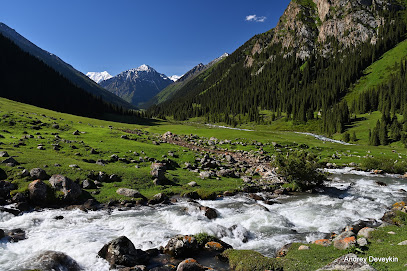
Ashu Guest house
Experience the heart of Kyrgyz hospitality at Ashu Guest House in Shabdan, a cozy retreat for adventurers and culture seekers alike.

Barskoon Waterfall
Experience the beauty of Barskoon Waterfall, a hidden gem in Kyrgyzstan, surrounded by stunning landscapes and tranquil nature.
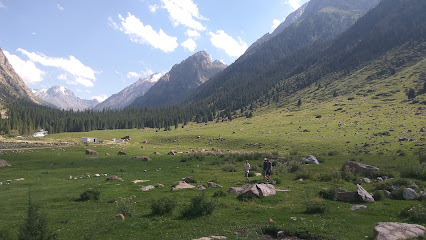
Chon-Kemin
Experience the natural beauty and serenity of Chon-Kemin River in Kyrgyzstan, a perfect destination for adventure and relaxation.

Vladimir Lenin Statue
Discover the historical significance of the Vladimir Lenin Statue, an iconic monument in Bishkek surrounded by vibrant local culture and lush landscapes.

Tash Rabat
Discover the ancient Silk Road at Tash Rabat, a historic caravanserai in the heart of Kyrgyzstan's breathtaking mountains.

Stella of Friendship of Nation
Explore the Stella of Friendship of Nations in Bishkek, a beautiful monument symbolizing unity and cultural diversity amidst vibrant gardens.

Kan'ony Konorchek
Explore the serene beauty of Kan'ony Konorchek, a nature preserve in Krasnyy Most, where breathtaking landscapes and rich biodiversity await.

Unmissable attractions to see
Boom Gorge
Explore the stunning landscapes and outdoor adventures of Boom Gorge, a breathtaking ravine in Kyrgyzstan, perfect for nature lovers and thrill-seekers alike.
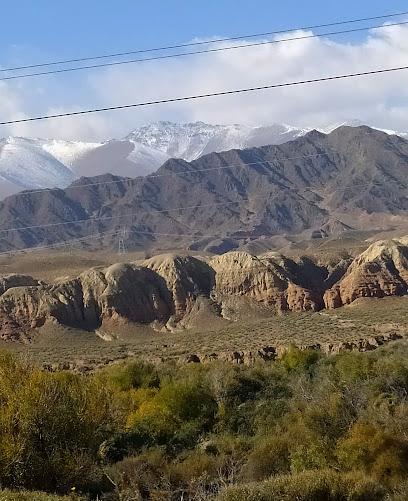
Змеиный мыс
Experience the breathtaking beauty and serene landscapes of Zmeinnyy Mys, a hidden gem near Cholpon Ata, perfect for nature lovers and adventurers.
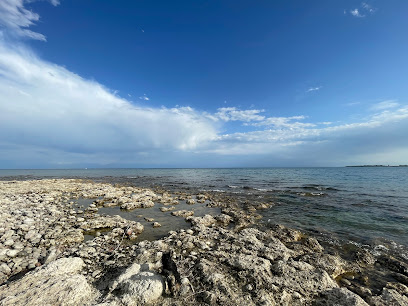
Chong-Kemin National Park
Explore the stunning landscapes and rich culture of Chong-Kemin National Park, a must-visit destination for nature lovers and adventure seekers in Kyrgyzstan.

Orobashy
Explore the tranquil beauty of Orobashy, a stunning garden in Sovetskoye offering vibrant flora and serene landscapes for nature lovers.

Essential places to dine
Ala Archa National Park
Experience the breathtaking beauty of Ala Archa National Park – a stunning natural gem near Bishkek with diverse landscapes and adventurous trails.

Green Yard
Discover comfort and warmth at Green Yard Hotel in Karakol - your gateway to Kyrgyzstan's stunning landscapes.

Ashu Guest house
Discover warm hospitality and comfortable accommodations at Ashu Guest House in Shabdan, perfect for travelers seeking relaxation and cultural exploration.

Апамдын чайы (каттама)
Explore authentic Kyrgyz flavors at Апамдын чайы (каттама), Cholok's premier buffet restaurant offering a feast for every palate.

Kemin Guest house
Discover comfort and tranquility at Kemin Guest House, nestled in the heart of Kaindy's stunning natural beauty.
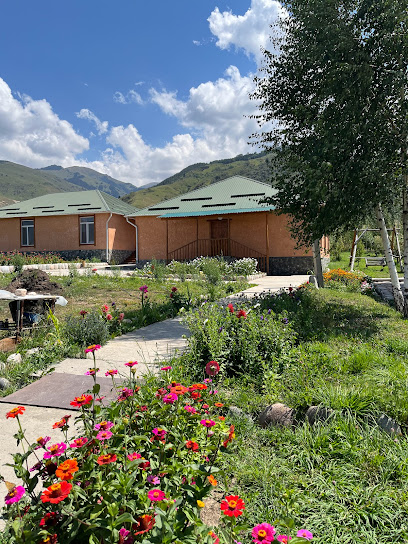
Guesthouse Kok-Archa
Experience authentic Kyrgyz hospitality at Guesthouse Kok-Archa in Tar-Suu gorge – your serene retreat surrounded by nature's splendor.
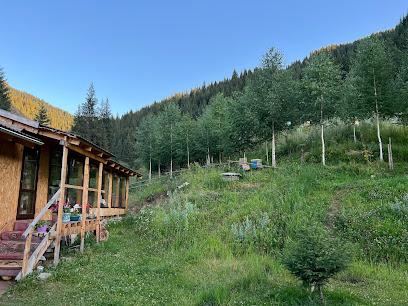
Solto Holidays - Tours in Kyrgyzstan
Explore Kyrgyzstan's breathtaking landscapes and rich culture with personalized tours from Solto Holidays - your gateway to adventure.

Sultan
Discover family-friendly dining at Sultan in Kemin - where delicious meals meet warm hospitality for an unforgettable experience.

Chaydoos
Discover family-friendly dining at Chaydoos in Kemin – where delicious meals meet warm hospitality.

Trip to Kyrgyzstan
Discover breathtaking landscapes and rich culture at Trip to Kyrgyzstan - your ultimate guide for exploring Central Asia's hidden gem.

Ostryye Krylyshki - Kemin
Discover authentic pizza flavors at Ostryye Krylyshki in Kemin, where fresh ingredients meet local culinary traditions.

Markets, malls and hidden boutiques
Asia Mall
Explore Asia Mall in Bishkek for a unique shopping experience with a mix of local and international brands, dining, and entertainment.

ZUM Aichurok
Discover the ultimate shopping experience at ZUM Aichurok, Bishkek's bustling shopping mall with local charm and international flair.

GUM Chynar
Explore GUM Chynar in Bishkek for a delightful shopping experience, blending modern convenience with rich Kyrgyz culture.

Taatan
Experience the vibrant shopping scene of Taatan, the premier destination in Bishkek for shopping, dining, and local culture.

Globus Balykchy
Explore the vibrant offerings of Globus Balykchy, your ultimate supermarket destination for local delights and unique souvenirs in Kyrgyzstan.

Supermarket Arzan
Explore the best of Kemin at Supermarket Arzan, your go-to destination for local groceries and international products.

Magazin Ayzat
Discover the vibrant local flavors at Magazin Ayzat, a grocery store offering fresh produce and regional specialties in Balykchy, Kyrgyzstan.

Issyk-Kul Brand Shop
Explore the essence of Kyrgyz culture at the Issyk-Kul Brand Shop, where authentic souvenirs and local flavors await.

Чогулдур
Discover the vibrant marketplace of Чогулдур in Kemin, offering fresh local produce and authentic Kyrgyz products in a friendly atmosphere.

Magazin Uluk
Discover the authentic flavors of Kyrgyzstan at Magazin Uluk – your go-to grocery store in Balykchy for local delights and fresh produce.

Saimaluu Tash Art Gallery
Explore the Saimaluu Tash Art Gallery in Osh, where the heart of Kyrgyz craftsmanship comes alive with unique souvenirs and cultural treasures.

Magazin Ayday
Discover the heart of Kemin at Magazin Ayday, where local crafts and warm hospitality create an unforgettable shopping experience.

Fotosalon Mergen
Explore Fotosalon Mergen in Balykchy for unique gifts and local crafts that capture the essence of Kyrgyz culture.
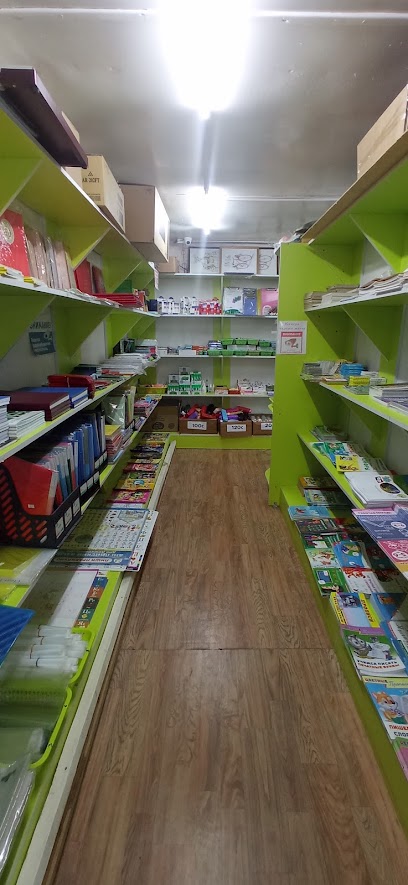
Ulitsa Bekturova 5
Explore the artistry of local textiles at Ulitsa Bekturova 5, a charming sewing shop in Balykchy showcasing unique handmade goods.

Nur-Sezim
Explore the heart of Kyrgyz culture at Nur-Sezim, a charming store in Toru Aygyr offering unique local crafts and authentic experiences.

Essential bars & hidden hideouts
Metro Pub
Experience the vibrant nightlife of Bishkek at Metro Pub, a local favorite for drinks, music, and unforgettable moments.
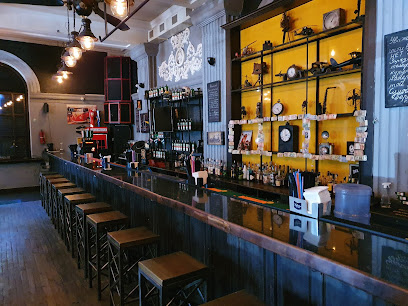
Pinta Pub Frunze
Experience the vibrant nightlife at Pinta Pub Frunze, a top destination in Bishkek for craft beers, delicious food, and a lively atmosphere.

Munchen pub
Experience the vibrant nightlife of Bishkek at Munchen Pub, where great drinks and good vibes await you in a cozy atmosphere.

Center Bar
Discover Bishkek's vibrant nightlife at Center Bar, featuring dancing, karaoke, and delicious dining in a stylish atmosphere.

No Name Bar
Discover the vibrant nightlife of Bishkek at No Name Bar, where great drinks and good company create unforgettable experiences.

Guinness Pub Bishkek
Discover the vibrant atmosphere and local flavors at Guinness Pub Bishkek, the perfect spot for relaxation and socializing in the heart of the city.
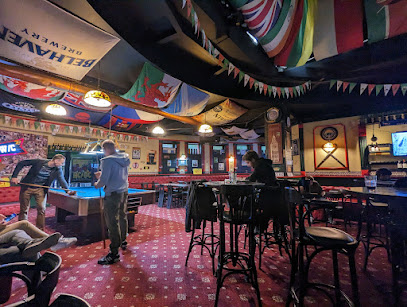
Save The Ales
Experience the best of Bishkek at Save The Ales, a brewpub offering a fusion of local beers and Vietnamese cuisine in a vibrant atmosphere.

Good Spirits
Discover the vibrant atmosphere of Good Spirits in Bishkek, a bar offering craft beers, delicious food, and unforgettable nightlife experiences.

Kipish Bar
Discover the vibrant nightlife of Bishkek at Kipish Bar, where local culture meets contemporary style in a lively atmosphere.

Norm bar
Experience the vibrant nightlife of Bishkek at Norm Bar, where local culture meets modern ambiance in a lively atmosphere.

Teplo bar
Discover the cozy charm of Teplo Bar in Bishkek, where delightful drinks and a warm atmosphere await travelers seeking relaxation and connection.

Boho Beach Bar
Experience the vibrant atmosphere and stunning views at Boho Beach Bar in Kurskoe, the ultimate destination for relaxation and socializing.

ola bar
Discover the vibrant nightlife at Ola Bar in Kosh Kol, where local flavors meet a lively atmosphere, perfect for unwinding after a day of adventure.

Винтаж на Иссык-Куле/ Vintage - wine bar Issyk-Kul
Discover the perfect blend of relaxation and fine wines at Vintage Wine Bar Issyk-Kul, where exquisite flavors meet stunning lakeside views.

Sky Bar Beach Raduga
Experience stunning coastal views and vibrant nightlife at Sky Bar Beach Raduga, the ultimate beach bar destination for relaxation and socializing.

Local Phrases
-
- HelloСалам
[Salam] - GoodbyeЖакшы калыңыз
[Jaqshy kalıñız] - YesОоба
[Ooba] - NoЖок
[Jok] - Please/You're welcomeАлдыңыз
[Aldınız] - Thank youРахмат
[Rahmat] - Excuse me/SorryКечиресиз
[Kechiresiz] - How are you?Кандайсыз?
[Kandaysız?] - Fine. And you?Жакшым. Сиз?
[Jaqshım. Siz?] - Do you speak English?Сиз инглизче сөйлөсүңүзбү?
[Siz İngilizce söylösüŋüzbü?] - I don't understandМенин анымдым жок
[Menin anımıdım yok]
- HelloСалам
-
- I'd like to see the menu, pleaseМенинге менюду көрсөтүп берсеңиз
[Meninge menüdı körsötüp bersiveŋiz] - I don't eat meatМен кесек тамактарын жемейм
[Men kesek tamaktarıŋ jemeym] - Cheers!Тост!
[Tost!] - I would like to pay, pleaseМенинге төлөп берсеңиз
[Meninge tölöp bersiveŋiz]
- I'd like to see the menu, pleaseМенинге менюду көрсөтүп берсеңиз
-
- Help!Жардам!
[Jardam!] - Go away!Бура кет!
[Bura ket!] - Call the Police!Полицияга чакырыңыз!
[Politsiyaga çakırıŋız!] - Call a doctor!Докторга чакырыңыз!
[Doktorga çakırıŋız!] - I'm lostМен каймандайм
[Men kaimandaym] - I'm illМен жазыктайм
[Men jażyktaym]
- Help!Жардам!
-
- I'd like to buy...Менинге ... сатып алуу керек
[Meninge ... satıp aluu kerek] - I'm just lookingМенинге тексерүү керек
[Meninge tekseryüü kerek] - How much is it?Буна чеч
[Buna cheç] - That's too expensiveБу тек чеч
[Bu tek cheç] - Can you lower the price?Чечди төмендете аласызба?
[Cheçdi tömendete alasızba?]
- I'd like to buy...Менинге ... сатып алуу керек
-
- What time is it?Саат канчада?
[Saat kançada?] - It's one o'clockБир саат
[Bir saat] - Half past (10)Ондон бир кийинки
[Ondon bir kiyinki] - MorningТүн
[Tün] - AfternoonКеч
[Kech] - EveningКече
[Keçe] - YesterdayКече
[Keçe] - TodayБүгүн
[Bügün] - TomorrowЭртең
[Erteñ] - 1Бир
[Bir] - 2Эки
[Eki] - 3Үч
[Üch] - 4Төрт
[Tört] - 5Беш
[Beş] - 6Алты
[Altı] - 7Жети
[Jeti] - 8Сегиз
[Segiz] - 9Тогуз
[Toguz] - 10Он
[On]
- What time is it?Саат канчада?
-
- Where's a/the...?... кайда?
[... kayda?] - What's the address?Мекен-жайы кандай?
[Meken-jayı kanday?] - Can you show me (on the map)?Маңзада көрсөтсөңүзбү?
[Mañzada körsötsoŋüzbü?] - When's the next (bus)?Кийинки кайда болот?
[Kiyinki kayda bolot?] - A ticket (to ....)Билет ( ... үчүн)
[Bilet ( ... üçün)]
- Where's a/the...?... кайда?
History of Kemin
-
Kemin, located in the Chuy Valley, has been inhabited since ancient times. Archaeological findings suggest that early nomadic tribes settled in the region, exploiting its fertile lands and strategic location for trade and agriculture.
-
During the height of the Silk Road, Kemin served as a vital stopover for traders and caravans. The region's hospitable climate and rich resources made it an essential rest and resupply point for merchants traveling between China and the Middle East.
-
In the 19th century, Kemin came under the influence of the Kokand Khanate. The region saw the construction of fortresses and trading posts, contributing to its development as a local commercial hub.
-
In the late 19th century, Kemin, along with the rest of the Kyrgyz territories, was annexed by the Russian Empire. This period marked significant changes in the region, including the introduction of Russian agricultural practices and administrative structures.
-
Under Soviet rule, Kemin underwent considerable industrial and agricultural development. The establishment of collective farms (kolkhozes) and state farms (sovkhozes) transformed the local economy. The region also saw improvements in infrastructure, education, and healthcare.
-
Following the dissolution of the Soviet Union in 1991, Kemin, like much of Kyrgyzstan, faced economic and social challenges. The transition to a market economy led to significant changes in the region's agricultural and industrial sectors.
-
Kemin is home to a rich cultural heritage, reflecting the diverse influences of its history. Traditional Kyrgyz customs, music, and crafts are preserved and celebrated in the region. Notable cultural sites include historic mosques, ancient petroglyphs, and traditional yurts.
-
Today, Kemin is a blend of historical legacy and modern development. The region continues to thrive on agriculture, with increasing emphasis on tourism. Visitors are drawn to its scenic landscapes, cultural festivals, and historical sites, making Kemin a unique destination in Kyrgyzstan.
Kemin Essentials
-
Kemin is located in the Chüy Region of Kyrgyzstan, roughly 95 kilometers east of the capital, Bishkek. The nearest international airport is Manas International Airport in Bishkek. From Bishkek, you can take a taxi, which takes about 1.5 to 2 hours, or a marshrutka (shared minibus) from the city's bus terminals. The marshrutka ride is an economical option and offers a glimpse into local life.
-
Kemin is a small town where most of the attractions are within walking distance. For longer trips, local taxis are available and relatively affordable. Marshrutkas run between Kemin and nearby towns and villages, providing an inexpensive way to explore the region. Renting a car is another option for those who prefer to travel at their own pace and visit more remote areas.
-
The official currency in Kyrgyzstan is the Kyrgyzstani Som (KGS). Credit cards are accepted in some hotels and larger restaurants, but it is advisable to carry cash, especially in smaller establishments and rural areas. ATMs are available in Kemin, but it's a good idea to have sufficient cash before heading into more remote areas.
-
Kemin is generally a safe destination for tourists. However, standard precautions should be taken to ensure personal safety. Avoid walking alone at night in unfamiliar areas and keep an eye on your belongings in crowded places. While there are no specific high-crime areas targeting tourists, it's always best to stay vigilant and aware of your surroundings.
-
In case of emergency, dial 112 for immediate assistance. Kemin has local police and medical facilities available. It is recommended to have travel insurance that covers medical emergencies. For minor health issues, there are pharmacies in town where you can purchase over-the-counter medications.
-
Fashion: Do dress modestly, especially when visiting religious sites. Avoid wearing revealing clothing. Religion: Do respect local customs and traditions. Always cover your head when entering mosques. Public Transport: Do be respectful and offer your seat to elderly passengers. Don't eat or drink on public transport. Greetings: Do greet people with a handshake. A slight bow of the head is also a sign of respect. Eating & Drinking: Do try local delicacies and accept food offerings graciously. Don't refuse hospitality, as it is considered impolite.
-
To experience Kemin like a local, visit the local markets where you can buy fresh produce and traditional Kyrgyz goods. Engage with locals, as they are often friendly and willing to share stories about the town's history and culture. Don't miss visiting the nearby Chong-Kemin National Park, which offers stunning natural landscapes and opportunities for hiking and horseback riding. For a unique experience, attend a local yurt stay, where you can learn about traditional Kyrgyz nomadic life.
Nearby Cities to Kemin
-
Things To Do in Tokmok
-
Things To Do in Kochkor
-
Things To Do in Bishkek
-
Things To Do in Cholpon-Ata
-
Things To Do in Kyzyl-Oi
-
Things To Do in Karakol
-
Things To Do in Jalal-Abad
-
Things To Do in Osh
-
Things To Do in Andijan
-
Things To Do in Namangan
-
Things To Do in Shymkent
-
Things To Do in Angren
-
Things To Do in Chirchiq
-
Things To Do in Tashkent
-
Things To Do in Khujand






